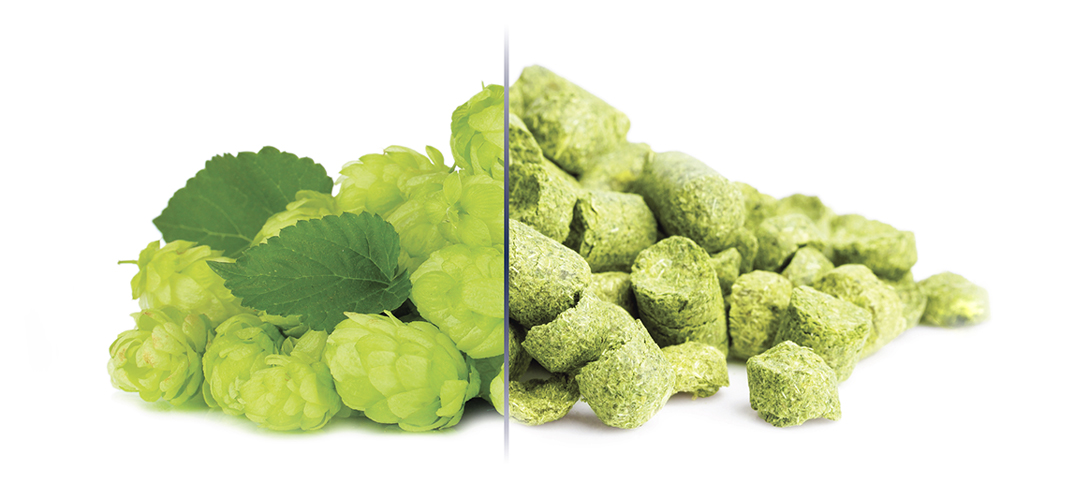Get Lupulin Rich

What makes enriched hop pellets so special?
Before jumping into a discussion of lupulin-enriched hop pellet production, let’s start with a quick review of how “normal” hop pellets are produced. The process of transforming hop cones to pellets begins when hop cones are hammer-milled into a powder. This sticky and aromatic powder is then blended to homogenize hops from multiple bales, cleaned to remove strigs, and then compressed into pellets using a pellet die. Approximately 90% of the total hop cone weight is retained, so this sort of hop pellet is known as a Type 90 or T-90. Most brewers usually skip the T-90 designation and refer to these as pelletized hops.
Add a few additional low-temperature processing steps, and T-90s are transformed into lupulin-enriched pellets. These special steps increase the lupulin gland component of the hop powder by removing hop leaf material – hence the name “lupulin-enriched”, enriched, or concentrated hop pellets. The original enriched pellets, first produced in the 1980s, yielded approximately 45 kilos of enriched pellets from 100 kilos of whole hops and were called Type 45 pellets. The name stuck and today enriched pellets are sometimes referred to as enriched pellets.
Concentrated flavor and greater revenue per barrel.
Chilled out
Enriched pellets follow the same basic production process as T-90 pellets, except for the special steps used to separate lupulin glands from the plant matter of a hop cone. This process involves chilling the hop powder exiting the hammer mill with very cold air (-30 to -35˚C) to decrease the stickiness of the hop powder, followed by screening to separate lupulin glands (the golden goodies containing alpha-acids, beta-acids, and hop oils) from hop leaf and stem material. Some leaf material is blended back into the lupulin gland stream to aid in binding; this enriched mixture of lupulin glands and hop leaf flakes is compressed into enriched pellets.
Benefits of using enriched hop pellets

Enriched pellets can be a more sustainable option than T-90 pellets and whole cone hops. Because they are more concentrated, enriched pellets reduce cost and space requirements for shipping and cold storage.
The major benefits, however, show up in the brewing process. Because enriched pellets contain less insoluble plant matter than T-90s, wort losses are reduced while beer yields and efficiencies are increased. The reduction in leaf matter for hop acids to adhere to means increased hop utilization, and a lower solid load to rinse from the whirlpool plus less effluent from rinsing means easier cleanup. Bottom line: more sellable beer can be gained from each turn, while using less hops.
The same sorts of improvements are also seen in the cellar with reduced beer losses and effluent generation when enriched pellets are used for dry-hopping. The cellar crew will be happy about the lower pounds per barrel required to achieve the same results—especially in breweries utilizing manual dry-hopping methods.
The last key difference between these types of pellets is the reduced polyphenol contribution to beer when using enriched pellets compared to T-90s. Some beers benefit from the astringency and herbal character associated with cone leaf material, while others benefit from the reduction. This is where science gives way to art. If you want more hop astringency yet like the advantages of enriched pellets, use a blend of enriched pellets and T-90. And if you are looking to reduce the “green” sensory component as much as possible…use all enriched pellets.
Bar none, enriched pellets have a lot to offer and are a versatile addition to a brewer’s toolkit.